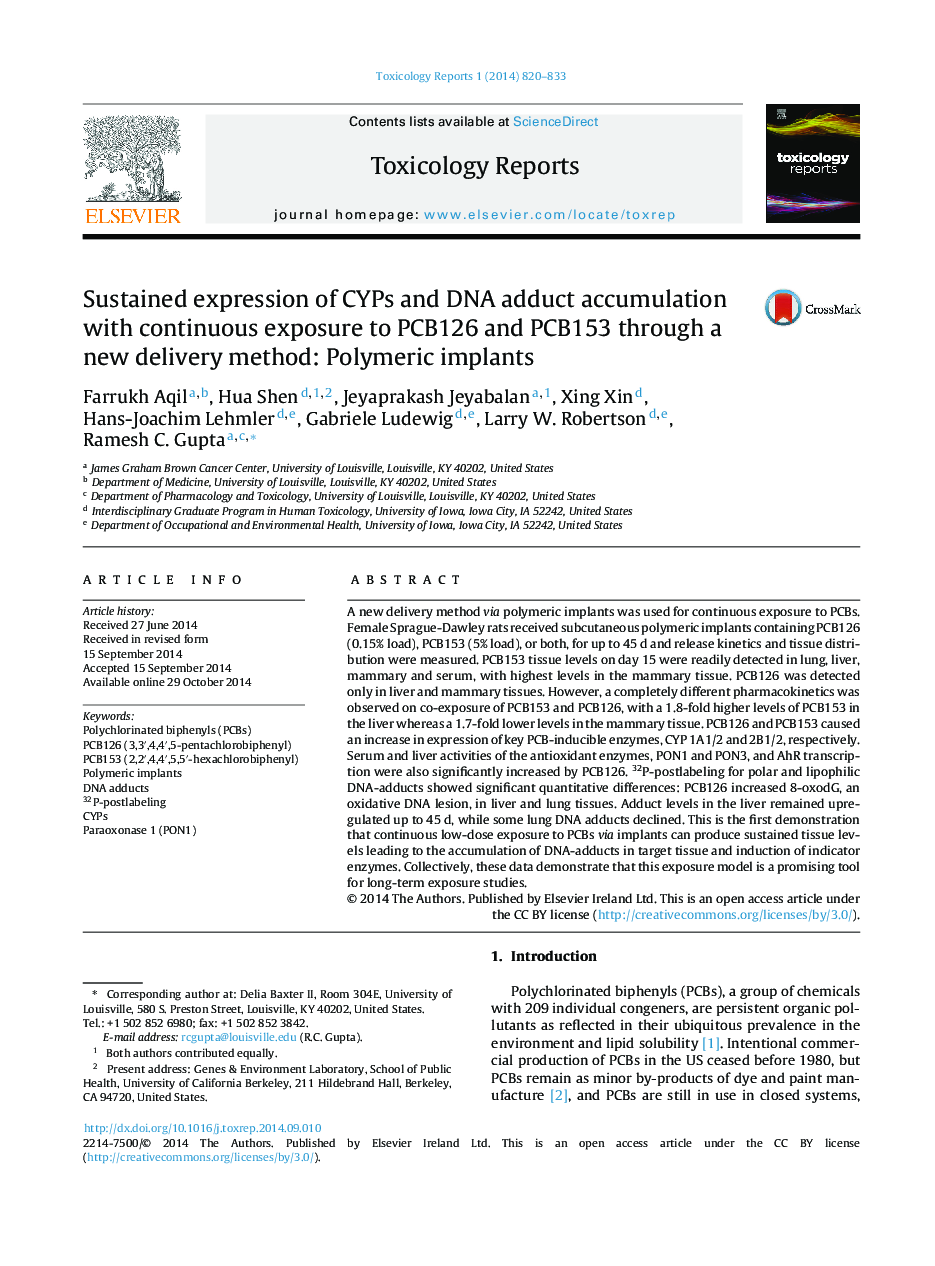| کد مقاله | کد نشریه | سال انتشار | مقاله انگلیسی | نسخه تمام متن |
|---|---|---|---|---|
| 2572371 | 1561193 | 2014 | 14 صفحه PDF | دانلود رایگان |

• Polymeric implants successfully achieved continuous exposure to PCBs in rats.
• PCB126 resulted in significant oxidative DNA damage (8-oxodG) in rat liver and lung.
• PCB126 or in combination with PCB153 induced PON1 and its activity in the liver.
• The induction was even greater for PON3 and AhR gene transcription.
• Co-treatment reduced mammary PCB153 and increased liver PCB126 and PCB153 levels.
A new delivery method via polymeric implants was used for continuous exposure to PCBs. Female Sprague-Dawley rats received subcutaneous polymeric implants containing PCB126 (0.15% load), PCB153 (5% load), or both, for up to 45 d and release kinetics and tissue distribution were measured. PCB153 tissue levels on day 15 were readily detected in lung, liver, mammary and serum, with highest levels in the mammary tissue. PCB126 was detected only in liver and mammary tissues. However, a completely different pharmacokinetics was observed on co-exposure of PCB153 and PCB126, with a 1.8-fold higher levels of PCB153 in the liver whereas a 1.7-fold lower levels in the mammary tissue. PCB126 and PCB153 caused an increase in expression of key PCB-inducible enzymes, CYP 1A1/2 and 2B1/2, respectively. Serum and liver activities of the antioxidant enzymes, PON1 and PON3, and AhR transcription were also significantly increased by PCB126. 32P-postlabeling for polar and lipophilic DNA-adducts showed significant quantitative differences: PCB126 increased 8-oxodG, an oxidative DNA lesion, in liver and lung tissues. Adduct levels in the liver remained upregulated up to 45 d, while some lung DNA adducts declined. This is the first demonstration that continuous low-dose exposure to PCBs via implants can produce sustained tissue levels leading to the accumulation of DNA-adducts in target tissue and induction of indicator enzymes. Collectively, these data demonstrate that this exposure model is a promising tool for long-term exposure studies.
Journal: Toxicology Reports - Volume 1, 2014, Pages 820–833